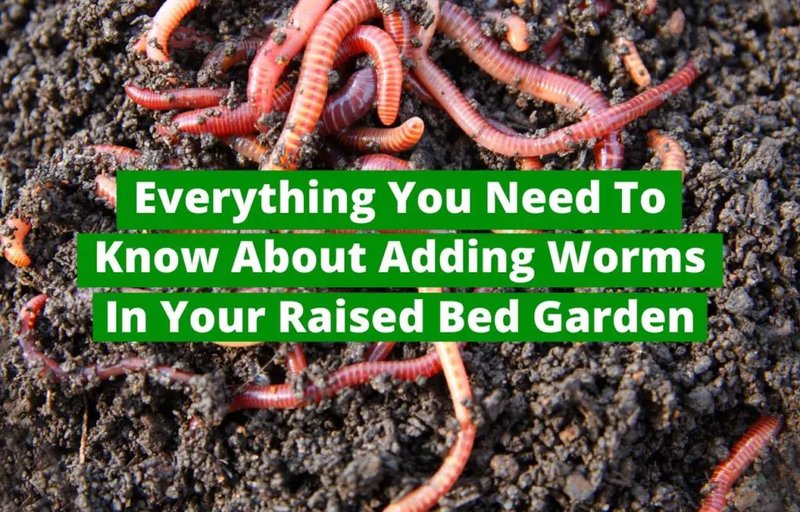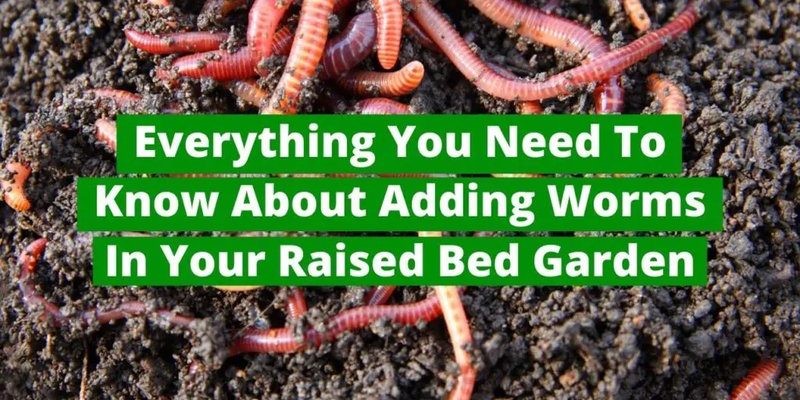
Here’s the thing: raised garden beds can be a bit different from traditional garden plots. They often have a mix of soil, compost, and other amendments. You might be thinking, “Is that a good home for earthworms?” Let’s dig in (pun intended!) to understand how these fascinating creatures interact with raised beds and why they’re beneficial for your gardening efforts.
Why Earthworms Matter in Your Garden
You might not realize just how important earthworms are, but they’re like little superheroes for gardeners.
- Soil Aeration: As earthworms burrow through the soil, they create channels that allow air and water to flow more freely. This aeration is crucial for healthy root development and helps prevent soil compaction.
- Nutrient Recycling: Earthworms eat decaying plant materials. As they digest this matter, they excrete nutrient-rich castings, which enrich the soil. This means healthier plants with better growth.
- Microbial Activity: Their activity encourages the growth of beneficial microbes. These microbes break down organic matter faster, which helps feed your plants.
By adding earthworms to your garden, you’re setting the stage for a thriving ecosystem that benefits your plants and your efforts.
How Do Earthworms Thrive in Raised Beds?
You might be wondering, “Are raised beds a good fit for earthworms?” The answer is a resounding yes! Despite their differences from traditional gardens, raised beds can create an ideal environment for these creatures.
Raised garden beds often have improved drainage and a better soil structure compared to ground-level gardens. If you manage your soil correctly—using a mix of compost, soil, and organic materials—you’ll create a welcoming home for earthworms. They enjoy the organic matter because it provides food, and the loose soil allows them to move freely.
Another great thing about raised beds is that they can retain warmth. This warmer environment can encourage earthworms to stay active, even in cooler weather. So, if you’re in a region with cold winters, having a raised bed could really help keep your earthworm population healthy.
Tips for Keeping Earthworms Happy in Your Raised Bed
Now that you know earthworms can thrive in raised beds, how do you ensure they’re happy? Here are some handy tips:
- Use Organic Matter: Regularly add compost, shredded leaves, or well-rotted manure. This will not only feed the earthworms but also improve the soil structure.
- Avoid Chemicals: Try not to use synthetic fertilizers or pesticides. These can harm earthworms and disrupt the delicate balance in your soil.
- Moisture Matters: Keep your raised beds slightly moist but not soggy. Earthworms need a damp environment to thrive, as they breathe through their skin.
By following these simple steps, you can create a warm and inviting habitat for earthworms while simultaneously enriching your garden.
Common Misconceptions About Earthworms in Raised Beds
You might have heard some myths about earthworms. Let’s clear the air on a few of them:
- Myth: Earthworms Don’t Like Raised Beds: This is simply not true. They can thrive if the conditions are right, as discussed earlier.
- Myth: They Can’t Survive in Dry Soil: While it’s true that dry conditions are not good for them, raised beds that are properly maintained can provide the moisture they need.
- Myth: All Earthworms Are the Same: There are many species of earthworms. Some prefer deeper soils, while others thrive in surface layers. It’s best to have a mix in your raised bed.
Understanding these misconceptions can help you better care for your earthworm population.
Best Practices for Testing Soil for Earthworms
If you’re curious about how many earthworms are in your raised bed, testing your soil can reveal a lot.
1. Soil Sample: Take a sample of soil from different parts of your raised bed. Aim for about a cup of soil.
2. Water Test: Moisten the soil slightly, then spread it out on a flat surface.
3. Observation: After a few minutes, look for earthworms. If you see several, that’s a good indication that your soil is healthy.
This kind of testing gives you insight into the living conditions for earthworms and helps you adjust your gardening practices as needed.
Earthworm Issues: How to Troubleshoot
If you notice a decline in your earthworm population, it’s essential to figure out what’s going wrong. Here are some common issues and how to fix them:
- Overwatering: If your soil is too wet, earthworms might drown. Ensure good drainage and adjust your watering schedule.
- Soil Compaction: Packed soil can hinder earthworm movement. Regularly aerate the soil by gently turning it over or adding more organic material.
- Lack of Food: Without enough organic matter, earthworms may leave. Regularly add compost to provide them with that essential food source.
Troubleshooting these issues helps ensure your earthworms remain happy and your garden thrives.
Incorporating earthworms into your raised garden beds is not just beneficial—it’s essential for a healthy garden environment. These little creatures are more than just wriggly helpers; they contribute significantly to soil health and plant growth. By understanding their needs and adjusting your gardening practices, you can create an inviting space for them.
So, the next time you’re planting in your raised bed, remember that these earthworm buddies are there, working behind the scenes to help your plants flourish. Keep their habitat healthy, and they’ll return the favor with vibrant, thriving crops. Happy gardening!

